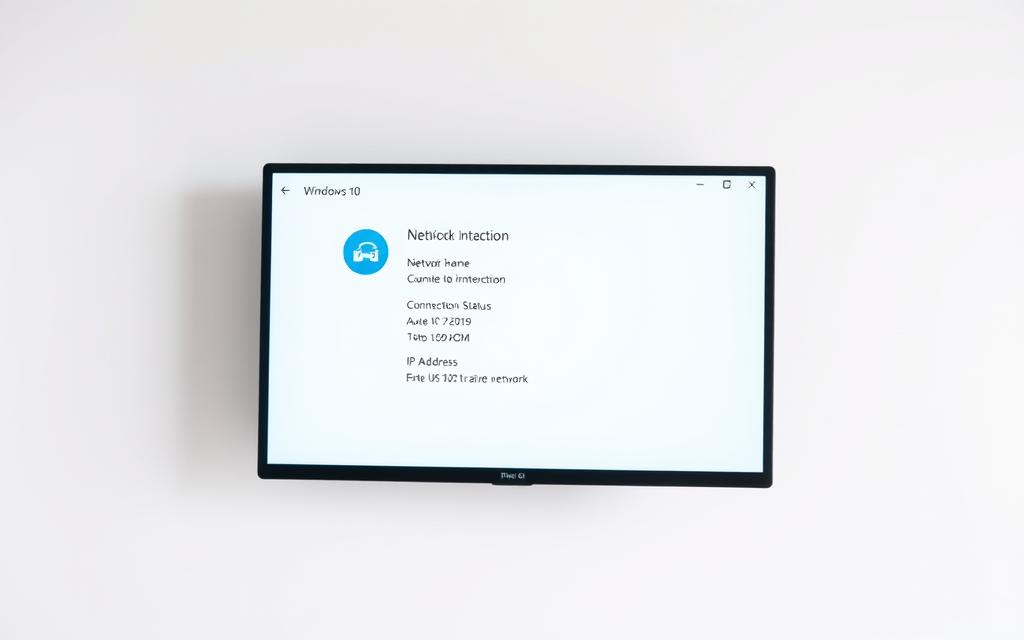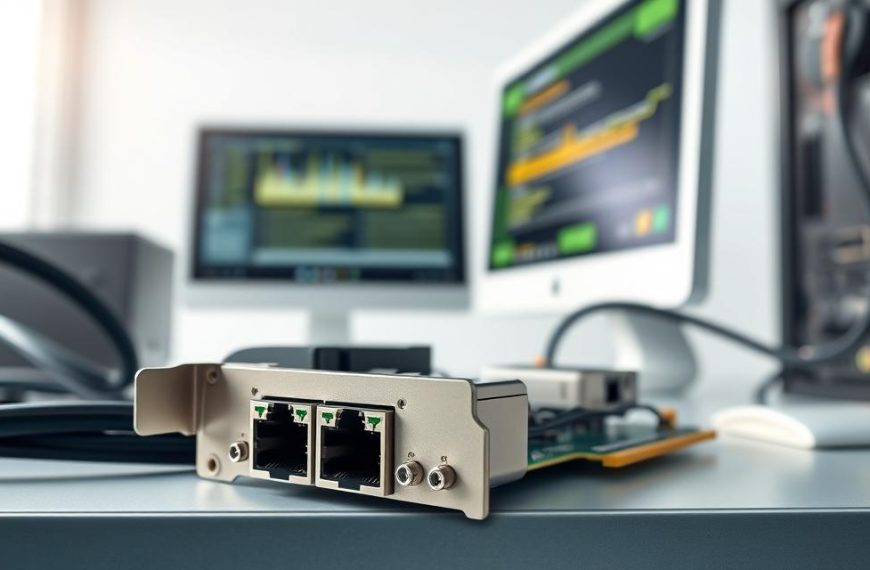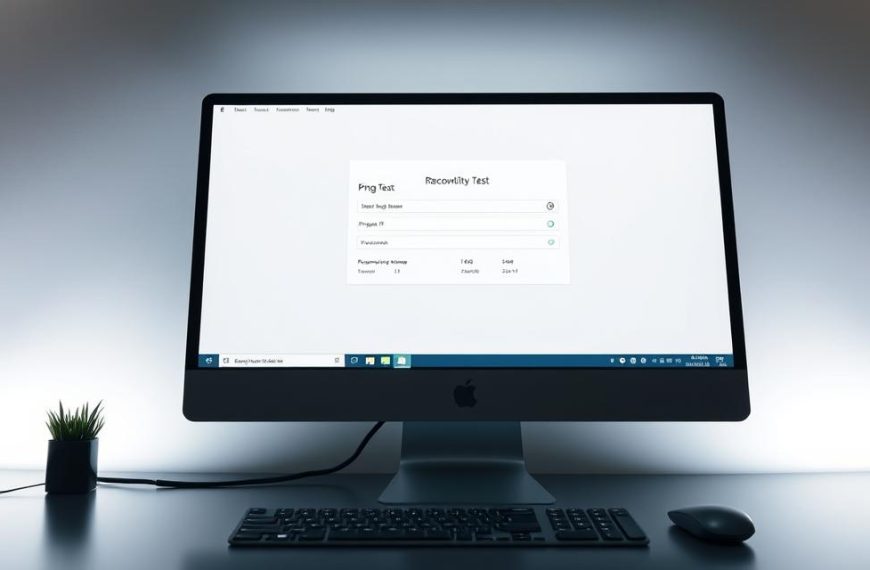In today’s world, knowing your device’s unique name is key. It helps with many tasks and fixes problems.
Network identification makes devices talk to each other smoothly. It helps share resources and makes fixing issues easier. This is true for work and home networks alike.
There are many ways to find your device’s name. Each method has its own benefits. Knowing these network discovery methods helps you work better online.
This guide shows you how to find your computer’s name easily. Learning these steps makes your computer use better and more efficient.
Understanding Computer Network Names in Windows 10
Network identifiers are like digital labels for your computer in different networks. They help devices talk to each other and make it easier for admins to manage networks. Knowing about these identifiers is key for both home users and IT pros working with Windows 10.
What Constitutes a Computer Network Name
In Windows 10, a computer network name includes three main parts: hostname, NetBIOS name, and FQDN. The hostname is the basic name seen on local networks. NetBIOS names are for older apps and network browsing. FQDNs give the full domain path for internet connections.
These names work together for smooth network communication. Each has its own role but follows Windows’ naming rules.
Different Types of Network Identifiers and Their Purposes
Windows 10 uses various network identifiers for different needs. Hostnames identify devices on local networks. NetBIOS names help with older apps and file sharing. FQDNs are for internet and enterprise networks.
Each type follows naming rules to avoid problems. These rules limit character use and length for network stability.
| Identifier Type | Maximum Length | Primary Purpose | Common Usage Scenarios |
|---|---|---|---|
| Hostname | 15 characters | Local network identification | Home networks, workgroups |
| NetBIOS Name | 15 characters | Legacy application support | File sharing, network browsing |
| FQDN | 255 characters | Internet domain resolution | Enterprise networks, web services |
Practical Applications of Knowing Your Network Name
Knowing your computer’s network identifiers is very useful. It helps admins quickly find and fix problems. It also makes software updates more accurate.
IT pros use names for tracking and support. This makes managing large networks easier. It helps keep maintenance records up to date.
Tools for mapping networks use these names to show network layouts. System management apps use them to monitor and manage devices. This helps with security and resource tracking.
Understanding network identifiers helps solve connectivity issues. It also makes talking to support teams easier when explaining network problems.
How to Find Computer Network Name Windows 10 Using System Settings
Windows 10’s System Settings makes it easy to find your network details. It has a user-friendly interface that many find easier than using commands.
Accessing Windows Settings Menu
Start by opening the Settings app. Click the Start button in the bottom-left corner, then pick the gear-shaped Settings icon. Or, press Windows key + I at the same time for quick access.
This opens the main Settings window. It’s your go-to for system settings.
Navigating Through Network & Internet Options
In Settings, click on “Network & Internet”. This section handles all your system’s connectivity.
The left panel shows different network categories. Choose “Status” to see your current connection details. This area gives you key info about your active network.
Locating Network Name in Status Section
In the Status section, look at the “Properties” area. Your network name is listed here, under specific labels.
For wireless connections, it’s usually next to “Network” or “SSID”. Ethernet connections might show as “Network 2” or similar.
Viewing Detailed Connection Properties
To see more network details, click “Properties” under your connection info. This opens a window with more detailed data.
The properties window shows technical info like IP address, security type, and manufacturer. Your network name is easy to spot here.
This way, you get a clear view of your connection details without needing to use commands.
Command-Based Methods for Network Discovery
Command-line tools are great for network discovery. They give detailed info and are good for fixing complex network problems.
Using Command Prompt for Network Information
The Command Prompt is key for network admins and experts. It lets you access system info with simple text commands.
Executing Basic ipconfig Command
The ipconfig command shows basic network settings. Here’s how to use it:
- Press Windows Key + R to open the Run dialog
- Type “cmd” and press Enter
- In the Command Prompt window, type “ipconfig” and press Enter
This command shows your IP address, subnet mask, and default gateway. For more info, use “ipconfig /all”. It shows DNS servers and physical addresses too.
Advanced Network Discovery Commands
There are commands for deeper network insights. The “hostname” command shows your computer’s network name. Use “ping” to check if you’re connected.
The “netstat” command lists active connections and listening ports. These tools help find connection problems and watch network activity.
| Command | Function | Common Uses |
|---|---|---|
| ipconfig | Displays IP configuration | Basic network troubleshooting |
| hostname | Shows computer name | Quick identity verification |
| netstat | Lists network connections | Security monitoring |
| tracert | Traces network path | Connection route analysis |
PowerShell Techniques for Network Details
PowerShell is more advanced than Command Prompt. It lets you control network settings and diagnostics in detail.
Essential PowerShell Commands
PowerShell has special cmdlets for network management. “Get-NetIPConfiguration” gets IP address details. “Get-NetAdapter” shows all network interfaces and their status.
These tools let admins get detailed system info with simple commands. “Test-NetConnection” tests connections like ping but with more data.
Interpreting PowerShell Output
PowerShell gives structured object data, not plain text. This makes it easier to filter and process results. You get info like InterfaceIndex, IPAddress, and InterfaceAlias.
Knowing these properties helps identify network components. PowerShell is great for scripting and automating network tasks.
Both Command Prompt and PowerShell are strong for network discovery. They offer flexibility for advanced users doing network diagnostics.
Additional Approaches and Tools
Modern Windows 10 settings make it easy to find your network name. But, there are other ways to do this too. These methods are great for troubleshooting or if you like different ways to manage your network.
Finding Network Name Through Control Panel
The Control Panel is a classic tool for setting up your network in Windows 10. Here’s how to find your network name using the Control Panel:
- Open Control Panel from the Start menu or by searching
- Navigate to System and Security > System
- View your computer name, domain, and workgroup settings
- Your network identification appears under Computer name
This method gives you detailed system info and your network details. It’s useful for managing your system more broadly.
Using Network and Sharing Centre
The Network and Sharing Centre gives you a clear view of your network connections. To access it, do the following:
- Right-click the network icon in your system tray
- Select “Open Network and Sharing Centre”
- Click on your active connection next to “Connections”
- View the network name in the status window that appears
The Network and Sharing Centre also shows your connection status, network type, and access permissions. It’s more than just your network name.
“The Network and Sharing Centre is a top tool for managing your network. It offers basic info and advanced settings all in one place.”
Third-Party Network Utilities Overview
There are many third-party network tools that can help you manage your network. These tools give detailed analytics and are easy to use. They often have more features than Windows’ built-in options.
| Utility Type | Primary Function | Key Benefits |
|---|---|---|
| Network Scanners | Device discovery | Shows all devices on network |
| IP Configuration Tools | Detailed connection data | Advanced network statistics |
| Network Monitors | Real-time traffic analysis | Performance monitoring |
These tools show network data in a clear way. They also have features like connection testing and security scanning. Popular tools include Advanced IP Scanner, Angry IP Scanner, and Wireless Network Watcher. Each has its own special features for finding and managing your network.
When picking third-party tools, make sure they’re from trusted developers. They should work well with Windows 10’s security. Many offer free versions that are enough for most home and small business needs.
Troubleshooting and Common Scenarios
Network identification can sometimes be tricky, even with the right tools. This section offers practical solutions for common network naming problems.
Resolving Network Name Visibility Issues
When your computer network name doesn’t show up, several things could be wrong. Often, it’s because of permission settings, which can be a big issue in work settings.
First, check your network discovery settings in Windows Defender Firewall. Make sure network discovery is on for private networks. This simple change often fixes the problem.
If issues persist, look at your network profile type. Windows might have set it to public by mistake. This can make your device invisible to others.
Handling Multiple Network Connections
Today, we often deal with many network connections at once. Good multiple connection management helps your device choose the right network for each task.
Windows 10 can automatically pick the best network, but you can change this. Go to Control Panel to set your network priorities. This helps when you have networks with the same name.
If you’re more advanced, you can use metric values to control your connection preferences. Lower metrics get higher priority, giving you detailed control over your connections.
Refreshing and Renewing Network Settings
Network identification problems can also come from old or damaged settings. A network settings refresh can fix these issues without losing your personal data.
The network reset feature in Windows 10 is a powerful solution. It removes and reinstalls all network adapters and resets settings to default.
For less extreme fixes, try these steps:
- Release and renew IP configuration using Command Prompt
- Reset TCP/IP stack with netsh commands
- Restart network-related services through Services Manager
These network troubleshooting methods can solve most identification problems. They do this without losing your custom settings.
Conclusion
This guide has covered many ways to find network information in Windows 10. We’ve looked at using System Settings and command-line tools. Each method has its own benefits for different users.
For tech-savvy users, Command Prompt or PowerShell is great for detailed network info. But, for those who prefer a simpler way, Settings or Control Panel is better. These options are easier to use for everyday network tasks.
Good computer management means knowing both simple and complex methods. Having several ways to find network details helps, no matter your system’s setup. This skill is key for fixing network problems or setting up apps that need a network connection.
Staying up-to-date with your network helps keep your system safe and running smoothly. We suggest making these techniques part of your regular computer care. This will help your Windows 10 run at its best.

















